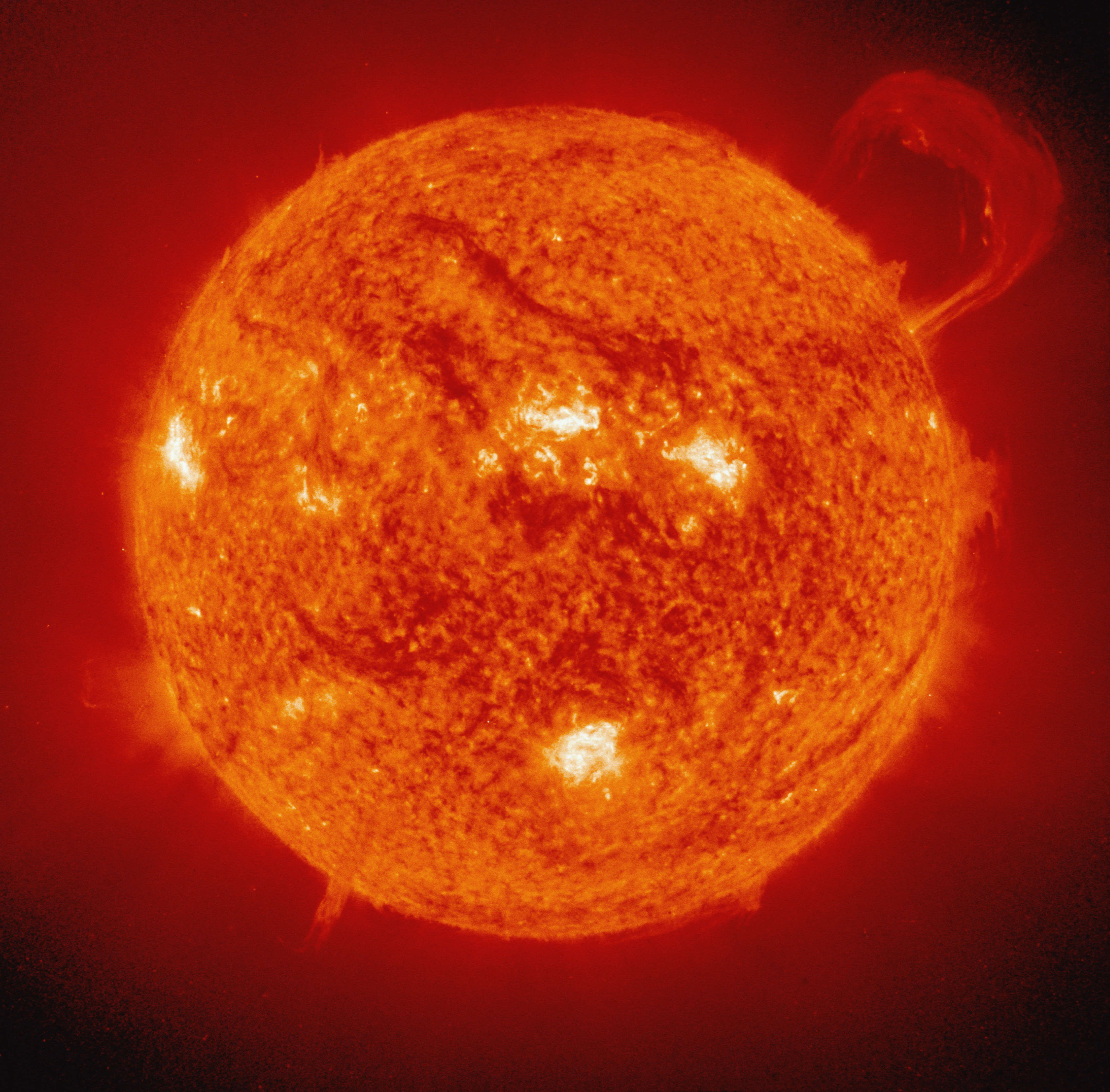Create a free profile to get unlimited access to exclusive videos, sweepstakes, and more!
The Sun blasted plasma 2.2 million miles into space in its most enormous eruption ever
Now that's fire.

Sometimes, the Sun seems like a mystical glowing orb. Then it turns into a fire-breathing beast.
The dragon was really unleashed when ESA’s Solar Orbiter recently caught our star belching hot plasma 2.2 million miles into space — the largest prominence eruption ever. This happened when an enormous solar prominence couldn’t hold all that plasma in anymore and erupted. Prominences are structures that extend out from a star’s photosphere, its visible (gaseous) surface that you can see in telescope images without taking your eyes out. Nothing has ever observed one so gargantuan before.
“It's really Solar Orbiter’s instrumentation that allows the erupting prominence to be seen extending so far from the Sun,” physicist Brian Wood of the Naval Research Laboratory told SYFY WIRE. Though he was not involved in this observation, he works with NASA's Parker Solar Probe, which was also watching the Sun at that time.
Solar Orbiter’s Extreme Ultraviolet Imager (EUI) is equipped with a Full Sun Imager (FSI) that was able to capture the phenomenon in action. EUI images the entire solar atmosphere from the Sun’s corona, the uppermost layer, to its chromosphere, a reddish layer of gas right above the lowermost level, the photosphere. There are heating processes within the atmosphere that are not well understood. EUI investigates these processes and also traces measurements of the solar wind back to where it originally came from. When they run into a planet’s magnetic field, charged particles from the solar wind can cause spectacular auroras. Saturn is an exception.
The FSI on the EUI stares at the solar disc no matter how close Solar Orbiter gets to the Sun. It will be gazing into those flames when the spacecraft reaches perihelion, or its closest approach to the Sun (a third of the distance from the Earth to the Sun), on March 26. That is also when much more of our star will appear in its field of view. FSI was still able to see the eruption in unreal detail even with the spacecraft further than it will be in several weeks.
“It's not that there haven’t been prominence eruptions that big before,” Wood said. “It's just that previous EUV imagers haven't had sufficient sensitivity or a big enough field of view to see them extending so far out.”
At least this thing wasn’t aimed towards our planet, or it might have been like that infamous scene in Game of Thrones where Daenerys rides Drogon into King’s landing to torch it with fire. The outburst went in the opposite direction. Because Solar Orbiter could not make out any signature of the eruption on the side of the Sun facing us, that means it had to have emerged on the other side. Something like that could have seriously messed with our satellites, internet, and electric infrastructure, not to mention blasting radiation that no SPF could protect us from.
Solar prominences are shaped by the Sun’s magnetic field. They really do look like dragon fire against the darkness of space, but despite their brightness, these loops of plasma are cooler and denser than the superhot plasma in the corona (if you can call anything arising from the inferno of the sun remotely cool). Most prominences are monsters that can last from days to months. When they erupt, they can set off coronal mass ejections (CMEs), which start out with magnetic disturbances in the corona and blast plasma into space at hundreds of miles per second.
“The recent prominence eruption would have presumably ended up incorporated into a larger CME event,” said Wood. “Prominence eruptions and coronal mass ejections are not really the same thing, though the former do often end up incorporated into the latter.”
The Sun is much less temperamental now than it was billions of years ago, but we’re going to need to upgrade our anti-radiation technology if it can still throw a tantrum like this.



























